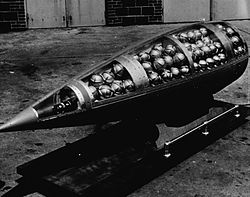Agencies and organizations
Army agencies and schools
The U.S. chemical weapons programs have generally been run by the U.S. Army:

- American Expeditionary Force Gas Service Section
- American Expeditionary Force Chemical Service Section
- U.S. Army Gas School
- U.S. Army Edgewood Chemical Biological Center
- U.S. Army Soldier and Biological-Chemical Command
- United States Army Chemical Corps, originally the Chemical Warfare Service
- United States Army Medical Research Institute of Chemical Defense
- U.S. Army Chemical Materials Agency
- Program Executive Office, Assembled Chemical Weapons Alternatives
- United States Army CBRN School
Units
Modern chemical depots
Active bases

Closed bases
- Johnston Atoll Chemical Agent Disposal System (closed 2000)
- Edgewood Chemical Activity at Aberdeen Proving Ground (closed 2006)
- Hawthorne Army Depot (eliminated shells 1999)
- Newport Chemical Depot (closed 2008)
- Pine Bluff Chemical Activity (closed 2014) [1]
- Umatilla Chemical Depot (closed 2014) [2]
- Anniston Chemical Activity (closed 2013) [3]
- Deseret Chemical Depot with Tooele Chemical Agent Disposal Facility (closed 2013) [4]


